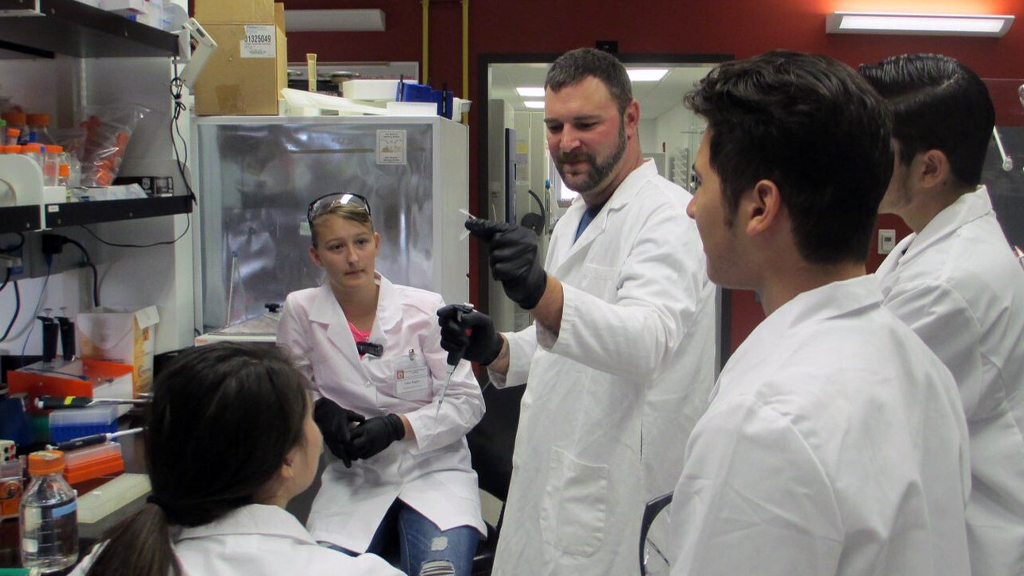The Engaged Scientist
Using Cogenerative Dialogues to Improve High School Students’ Internships With Scientists
Working at the elbows of scientists in an internship can be a beneficial way to support high school students’ science learning (Charney et al. 2007). Students in real laboratories witness ongoing scientific research projects in contextualized environments. Students can observe scientists’ thinking and decision making in scientific practices. Importantly, these firsthand experiences allow students to reflect thoroughly on their interests and positionality toward science. However, there are also challenges in working with scientists.
Scientists are researchers who conduct cutting-edge research involving complex scientific jargon, knowledge, and skills and normally do not receive educational training in pedagogies. After all, scientists and high school students are two very different groups of people and have very different social statuses. These gaps between high school students and scientists might become barriers and cause disappointment in interactions between them (Masson, Klop, and Osseweijer 2016). In my own observations of high school students’ internships with scientists, the scientists expressed that they found it difficult to exchange ideas with students; they wished they had better methods to communicate and understand students’ background, prior knowledge, and learning progress in order to provide more effective practices in the internship (Hsu and Roth 2010). To address these issues and improve the communication between scientists and high school students, cogenerative dialogues hold potential to improve the internship teaching and learning for high school students.
The Potential of Cogenerative Dialogues
Cogenerative dialogue (cogen) emphasizes the values of respect, equity, and diversity (Roth, Tobin, and Zimmerman 2002). Respect means that participants pay attention to what others have to say and use proper words to express their true voices without offending others; equity means that participants take equal turns to talk and encourage more reticent members of the group to speak more; diversity means that participants encourage different perspectives and appreciate their differences.
Cogen has been used in urban education for decades and was deemed a useful pedagogy to help students engage in dialogues that truly reflect their opinions and improve their science learning with teachers and researchers. Studies found that cogens could help students’ academic performance, attendance, and well-being in schools (Tobin 2008). Cogens can be held regularly (e.g., weekly) throughout a semester with students, teachers, researchers, and administrators to identify salient issues in science teaching and learning. During cogens, participants listen to each other’s concerns and brainstorm feasible solutions as a team. As time goes by, cogens address many issues raised and help participants generate and implement solutions. These small changes in teaching and learning can increase students’ sense of belonging and responsibility within a learning community. Thus, cogen has the potential to serve as a helpful tool to improve internship teaching and learning between scientists and high school students due to its democratic nature.
Collaboration and Activities in the Work With A Scientist Program
The Work With A Scientist Program was housed at the University of Texas at El Paso, a Hispanic-serving institution. The program collaborated with three Title I high schools and four university scientists to provide seven-month internships for high school students. At the beginning of the internship, the program held an orientation to welcome students and their families and friends.
For each cohort, the program recruited 36 high school students to work with the four scientists’ research teams. Each scientist’s research team guided nine high school students to conduct open-inquiry projects (three groups of three students each conducted three different projects). All of the high school students received laboratory safety training before they entered the laboratories. In the first five months of the internship (January–May), students visited university laboratories every other Saturday afternoon for three hours. During these Saturday afternoons, students learned about the ongoing research and equipment in the laboratories for the first two hours and participated in a cogen session in the third hour. In the last two months (June and July), students worked with these science professionals for six hours every business day and participated in cogen sessions twice a week. During the summer, students presented their project proposals to the public, revised their proposals, and then engaged in scientific research. At the end of the internship, students presented their project results to the public, including scientists, school principals, teachers, families, and friends.
Practices of Cogenerative Dialogue
Cogenerative dialogue (cogen) encourages equitable and respectful conversation within a particular structure that follows several rules. The Work With A Scientist Program trained four educational assistants to serve as cogen mediators for the four laboratory teams. These cogen mediators were trained to facilitate the cogens between the scientists and the high school students. Before the students arrived, the program provided a cogen training workshop for the scientists and their research teams. Cogen training was also provided for the students by their cogen mediator on the first day of their internships. The mediators also conducted icebreaker activities to introduce the high school students and the scientists to each other.
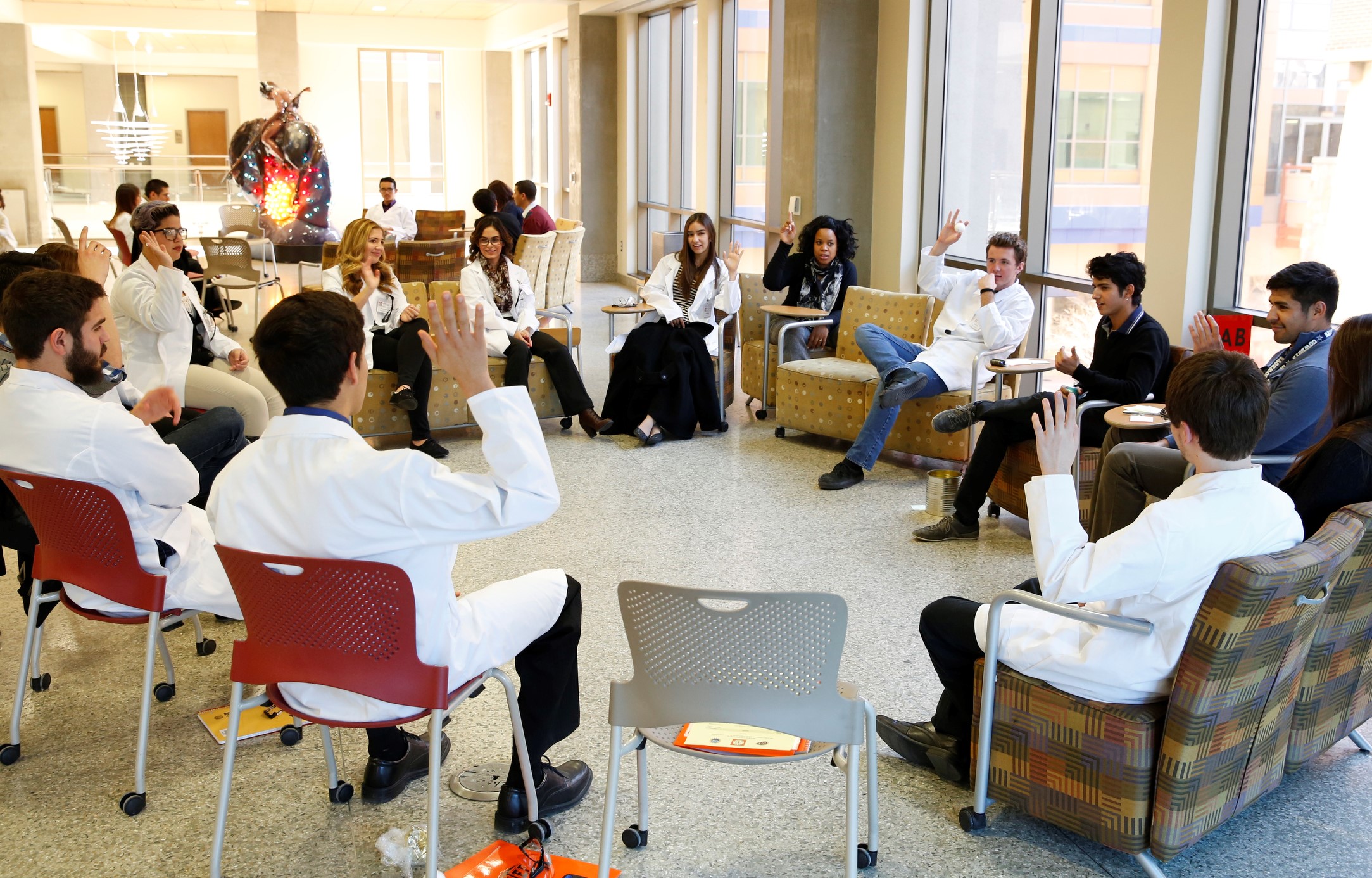
The handout for cogen rules and structure can be found in Appendix 1 (see Supplemental Materials). Three major cogen rules (Emdin 2011) include:
- Each person has equal turns and times to talk.
- Each person shows respect and listens attentively in conversations.
- A plan of action for addressing issues is generated to be implemented in future practice.
During the internship, the cogen mediator had participants sit in a circle for each cogen session. Each participant received a worksheet (Appendix 2, see Supplemental Materials) and spent five minutes writing about three aspects of the internship:
- I observed the following positive features in the internship.
- I observed the following issues/concerns in the internship.
- Other topics I would like to share and discuss with the team.
The cogen structure includes three parts: (a) discuss the implementation of consensus generated from the previous cogen; (b) discuss issues/positives/topics from the current week; and (c) discuss the quality of the current day’s cogen (randomly check three items from a list of cogen heuristics).
Before discussing the topics on the worksheet, the cogen mediator provided an overview of the solutions generated from the previous cogen and facilitated a discussion of how well those solutions had been implemented. If the implementation did not go well, further discussions to generate new solutions were conducted. Once participants agreed that no new solutions should be proposed, the cogen mediator discussed the new topics that participants wrote on the worksheet. During cogens, high school students and scientists talked respectfully and equitably to address any issues and topics that might improve the teaching and learning in their internships, such as teaching pace, teamwork collaboration, safety considerations, and presentation skills. Meanwhile, the mediator facilitated the dialogue and ensured that participants followed the cogen rules. At the end of each cogen session, participants evaluated the quality of the day’s cogen discussion by randomly checking three items from the list of cogen heuristics in Table 1 (see Supplemental Materials; Tobin and Alexakos 2013).
Three participants were invited to pick one number (from 1 to 40) out a bucket and lead the group to discuss the numbered topic, giving it a score from 1 to 10 (10 being the best) to indicate how well the cogen had gone for that randomly selected heuristic quality (e.g., Others choose to strive to make sense of what I am saying.). The practice of scoring the heuristics helps both scientists and high school students reflect on the equitable and democratic quality of cogens.
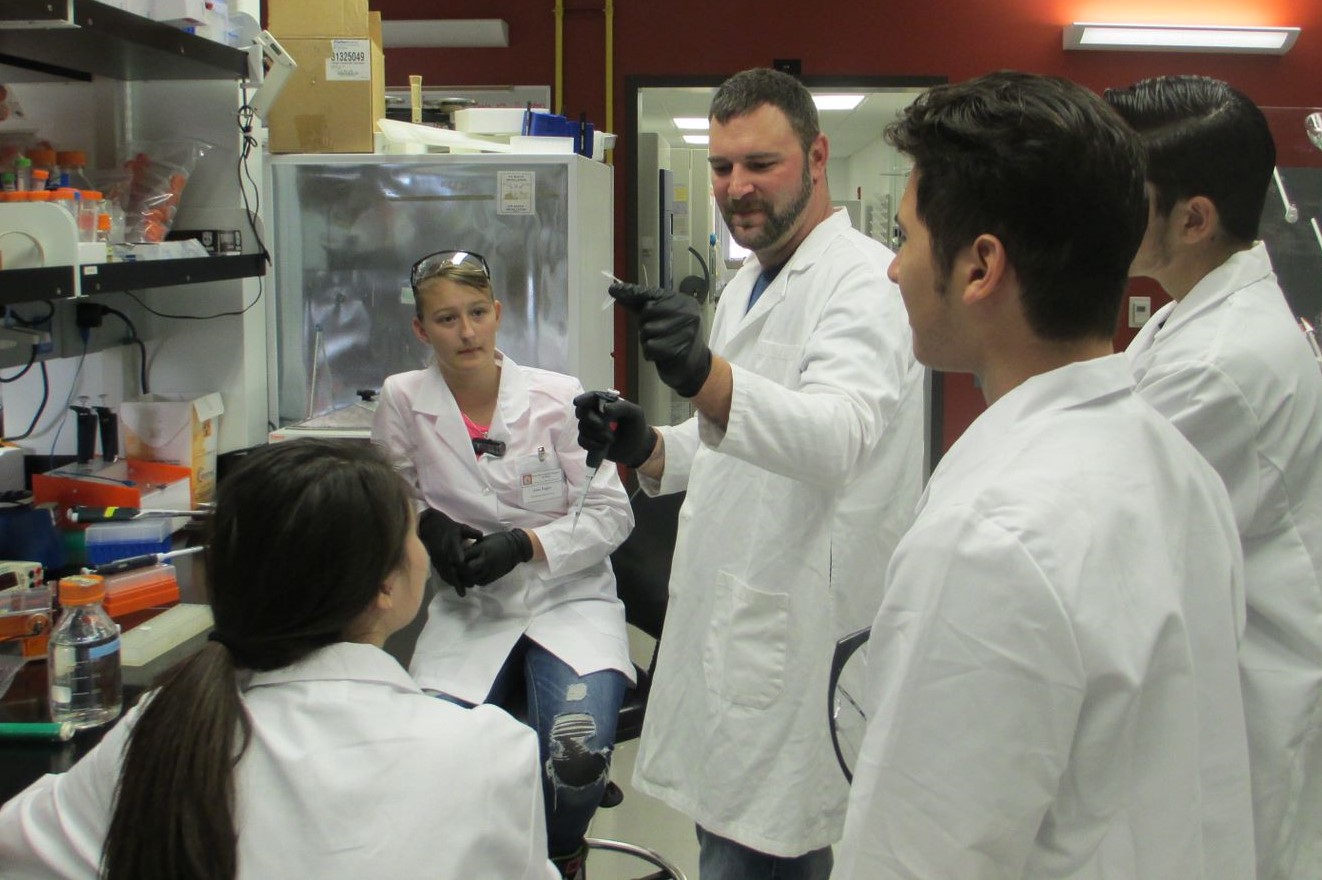
High School Students’ Experiences of Cogenerative Dialogues
After the seven-month internships (including about 22 cogen sessions), high school students were interviewed about their cogen experiences. Four major themes of these experiences are identified below.
Cogens encouraged students’ voices
One goal of cogens is to provide a space that supports students to express their opinions about their science internship without fear. Students may have been hesitant to speak up at the beginning, especially about issues that might single out troublemakers. But students quickly understood that cogens value equity, respect, and a diversity of voices. Students then formed a sense of solidarity and were not afraid to express their true voices. “We do really well in cogen. It is helpful and I always feel that I can speak freely and openly with my group, and I feel comfortable to discuss any issues I had if I had them. I also feel free to discuss what it is that I am uncomfortable with anything during my internship.”
Cogens enhanced social bonding between group members
Before the internship program, the students and scientists did not know each other. When they first met in the internship, they were strangers and likely felt distant from each other, especially given large differences in social status, age, and knowledge levels. However, through cogens, the students and scientists were encouraged to express their truthful voices and continuously exchange scientific ideas and sometimes personal stories. Students and scientists gradually formed a strong social bond and a sense of community. “It’s actually very fun. The more we meet in the cogenerative room, the better we become acquainted with the scientist, the better the experience working with them. When we are in cogen I feel closer to the scientist as ever before. We share personal thoughts that shows the trust we have. It’s a great experience.”
Cogens helped solve problems as a group
At the beginning of the science internship, most students were not familiar with the scientists’ research. Thus, when students were invited to conduct an open-inquiry project that promoted their autonomy in making all types of decisions (e.g., generating scientific questions, designing experiments, analyzing data), they often experienced uncertainty and encountered unforeseen problems, such as unsuccessful teamwork or feeling clueless about choosing a topic. In cogens, students were comfortable bringing up issues they encountered in the internship, and they felt confident that cogens would help them solve those issues. “If I have an issue to address at cogen, I know for sure that it will be resolved, and that all questions asked will be answered.” Importantly, in cogens, students learned from scientists about how to address issues as a group and solve problems scientifically. “The most successful thing from this cogen is how scientists showed us that it is a group effort to fix the problem. It honestly opened my eyes to see that the answers to issues aren’t always so complex, nor do they have to be done by oneself.”
Cogens can be boring if not used well
In the internship, each cogen session was allocated a one-hour time slot (once a week in spring semester and twice a week in summer). When participants had issues to discuss, they used the time effectively. But when they had no issues (especially at the end of the internship when most issues had been addressed and fixed), they felt bored in cogens because there was nothing significant to discuss. With the deadline for their project completion approaching, some students wished they could have used the cogen time to run their scientific experiments. “Each week there are less and less problems discussed in cogenerative dialogue, which is actually a really good thing. Sometimes I feel like we just look for the littlest issue we can find, just so we can have something to discuss, but they are not really important issues.”
Overall Outcomes of the Cogen-Based Internship Program
To investigate the overall impacts of the cogen-based internship program on students, we inquired about students’ perceptions about the internship learning environments and surveyed parents’ observations on the impacts of the internship program on their children’s science attitudes and interests.
The cogen-based internship provided a constructivist learning environment
To understand how students perceive the internship learning environment, we used a quasi-experimental design involving an experimental (internship) and a control (no internship) group. The internship group included 27 high school students who completed the seven-month internship, and the no-internship group consisted of 16 high school students who were taking Advanced Placement physics (AP physics) classes in school. The Constructivist Learning Environment Survey (CLES; Taylor and Fraser 1991, see the internship group survey in Appendix 3 (see Supplemental Materials) and the no-internship group survey in Appendix 4 (see Supplemental Materials) was administered to all 43 students as a pre- and post-test. To compare students’ perceptions of the learning environments in the university internship and at school, students’ gain scores on the pre-CLES and post-CLES surveys (using the general linear model procedure in SPSS 21.0 and univariate ANOVA) were compared between the internship and no-internship groups. The analysis showed that students in the internship group had greater gains from pre to post (n = 27, M = .21) compared to those in the no-internship group (n = 16, M = -.08, p = .02). These findings suggest that students who participated in the internship strengthened their perceptions of constructivist learning over the course of the program to a greater extent than students in the no-internship group (see results in Figure 1). This comparison relates only to the difference between these two groups (i.e., internship group and no-internship group). Future research that aims to investigate the impacts of cogen practices in particular might compare an internship with cogen practices and a similar internship without cogen practices.
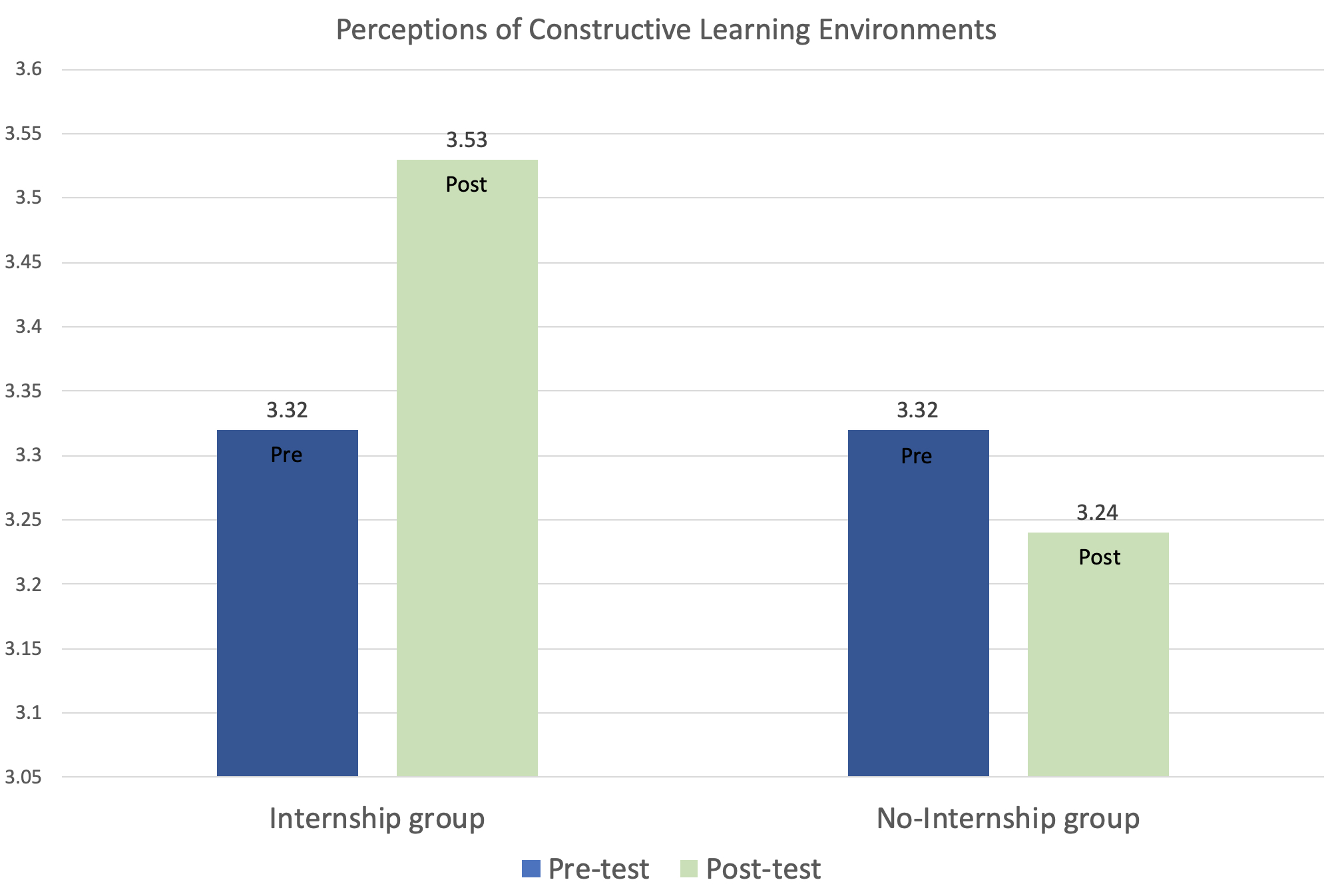
Students’ families observed that the internship students increased their interest in science
Internship students’ families were invited to attend students’ final presentation at the end of July. Families were invited to answer five questions with five scales (i.e., strongly agree, somewhat agree, neither agree/disagree, somewhat disagree, strongly disagree) to determine if they observed an increase in student interest in school projects, science, scientists, college, and science-related careers (see English and Spanish versions of the family survey in Appendix 5; see Supplemental Materials). On average, approximately 79% of families “strongly agreed” that students increased their interest toward school projects, science, scientists, college, and science careers. In particular, 86% of families “strongly agreed” that students showed more interest in science, and 86% of families “strongly agreed” that students showed more interest toward scientists (see results in Figure 2). Since approximately four out of every five students’ families strongly agreed that the students’ interest in science had increased, it is a promising indication that students’ families observed positive impacts of the Work With A Scientist Program.
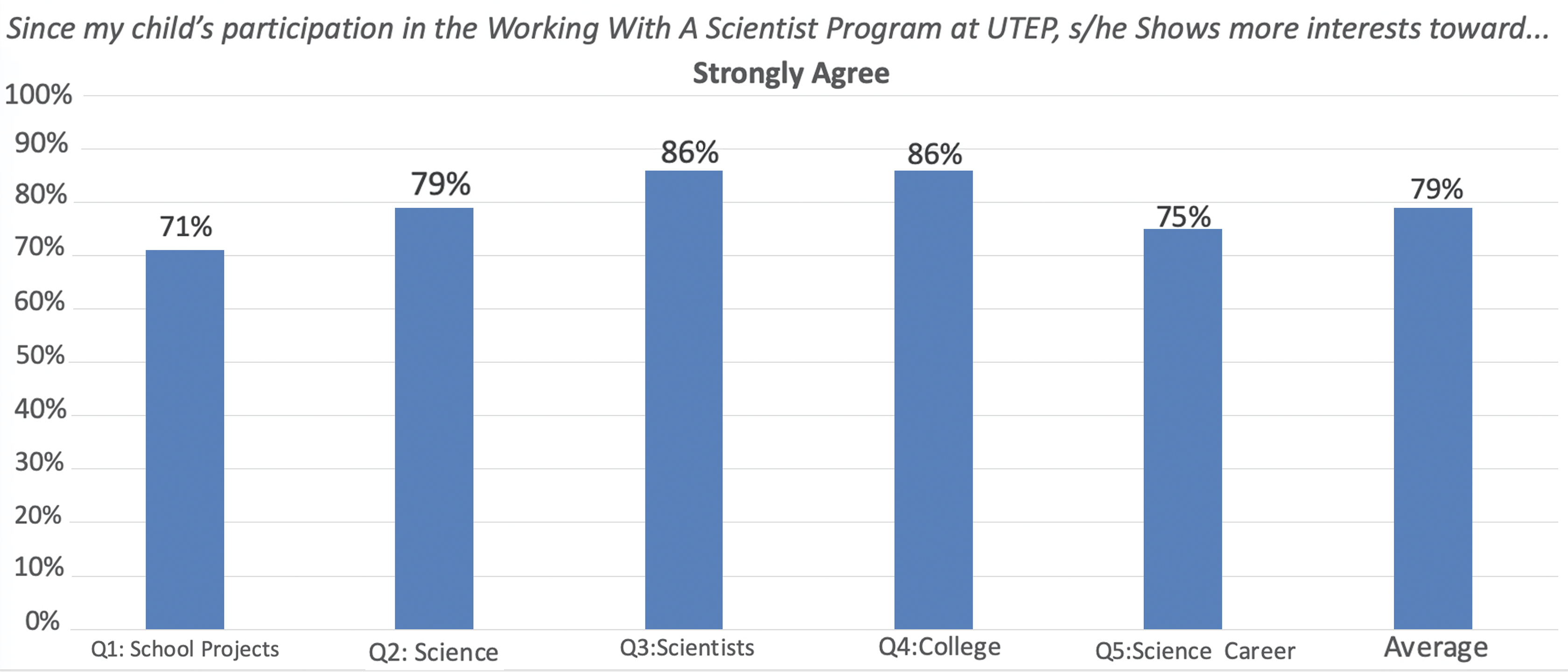
Recommendations for Implementing Cogenerative Dialogues Between Scientists and Youth
Based on these cogen practices between high school students and scientists, we identified several essential practices that helped us conduct successful cogens in the program. Four major recommendations are listed below.
Mediate the dialogues fairly
Cogen sessions need a well-trained facilitator to mediate the conversations between scientists and high school students. Because scientists and high school students did not know each other before the internship, it might have felt strange to them to participate in cogens, which require a strong commitment to listening, respect, and equity. Thus, we originally invited and trained the scientists’ assistants to serve as cogen mediators because they were familiar with the ongoing research and had the scientific knowledge needed to understand the research. However, the cogens did not flow well and many of the sessions became lecture-like communications. Often, cogen became a one-way communication in which students asked questions and the scientist answered them instead of consisting of authentic, collaborative discussions of issues students encountered in the internship and solutions to improve their experience. Furthermore, we discovered that these assistants found it difficult to facilitate fair dialogues because they were subordinate to the scientists and would agree with whatever the scientists said, which clearly is not consistent with the spirit of cogens. Thus, to improve the quality of cogen mediators, the program later selected educational assistants who were not subordinate to the scientists. They received extensive training on cogen mediation, including reading cogen papers, engaging in mock cogen sessions, and practicing debriefing issues and brainstorming solutions to address possible cogen challenges. During the internship program, these educational assistants had regular debriefing sessions with the program director and staff to address any issues or questions they encountered while implementing cogens. As a result, these educational assistants were able to facilitate cogens successfully.
Physical context matters
The arrangement of the physical setting makes an impact on the quality of cogens. At the beginning of the program, the scientists and students conducted their cogen sessions in a space that was available during that time, such as in a classroom or a laboratory. However, we quickly learned that the physical setting influenced participants’ engagement in cogens. For example, a classroom usually has chairs and a table facing the front. Thus, students would naturally sit in the chairs facing the scientist, who stood at the front. The cogens then became a student-to-scientist back-and-forth Q&A conversation, with no student-to-student dialogue. Subsequently, the program reserved a conference room with circle-like seating for the cogen sessions so participants could see each other directly and fully. Naturally, the conversations became more multidirectional among all participants rather than just a one-on-one conversation between one student and the scientist.
Make equity visible
Making equity visible reminded participants of the rules of cogens. Although participants understood that they should all have equal turns to talk in cogens, participants sometimes forgot this rule. Sometimes, a few participants dominated the conversation, especially when the topic was of interest to them. Thus, to help participants follow the equity rule, the program provided a poster on which a volunteer would record the turn tallies for each participant. That is, each time a participant talked, the volunteer would record their turn. This visual turn record allowed participants to see how many times each had talked. Thus, people who talked too much might reduce their contributions and people who hadn’t had a chance to talk might seize opportunities to express their opinions. This turn tally poster also allowed the cogen mediator to identify participants who hadn’t contributed much and encourage them to speak up.
Check the quality of dialogues
Checking the quality of cogens every time reminded participants of the characteristics of cogens. The cogen rules and structure were all designed to support these values. Thus, a high-quality cogen shows respectful behavior, equitable turns, and diverse voices. However, sometimes participants could not differentiate between cogens and regular conversations. To help them check the quality of their dialogues in cogens, the program invited three participants to randomly pick three items from a list of 40 cogen heuristics (Tobin and Alexakos 2013) and evaluate how well they did regarding these three items (see Table 1). These three participants led the group to orally discuss the quality of the day’s cogen by assigning a number from 1 to 10 (where 10 was the best quality and 1 the worst). If different opinions were expressed on the score, participants would exchange their ideas and discuss a score they agreed upon. This evaluation practice can remind participants what a successful cogen looks like and improve cogen practice over time.
Conclusion and Discussion
Working with scientists in internship settings allows students to learn science more authentically. To facilitate the interactions and communication between high school students and scientists, the Work With A Scientist Program introduced the pedagogical tool of cogens into internships. During cogens, high school students and scientists discussed various issues and topics respectfully and equitably to improve the teaching and learning that occurred in their internships. The results show that cogens helped participants address issues as a team, strengthen their social bonding, and increase the quality of science teaching and learning in their internships. When comparing students’ and scientists’ experiences, we noticed that both students and scientists acknowledged the usefulness of cogen in problem solving and voicing different perspectives. However, while students overwhelmingly expressed that cogen greatly enhanced their social bonding with scientists, the scientists seldom mentioned the affective dimension of cogen. This may be due to scientists’ objectivity-oriented mindset, which often emphasizes the importance of knowledge and skills in learning (rather than the affective dimension of learning).
Future research might use this study as a springboard to generate suitable cogen practices to address participants’ needs, such as adjusting the length of the cogen sessions or varying the cogen structure (e.g., open ended or semistructured) or format (e.g., create a website or phone-application version for cogens). Integrating cogens properly to address participants’ needs in an internship program has great potential in improving the communication and interaction between scientists and students.
Pei-Ling Hsu (phsu3@utep.edu) is an associate professor of science education at the University of Texas at El Paso, Teacher Education Department in El Paso, Texas.
citation: Hsu, P.-L. 2021. Using cogenerative dialogues to improve high school students’ internships with scientists. Connected Science Learning 3 (3). https://www.nsta.org/connected-science-learning/connected-science-learning-may-june-2021/using-cogenerative-dialogues
Careers Equity Inclusion Labs Research STEM High School Informal Education



